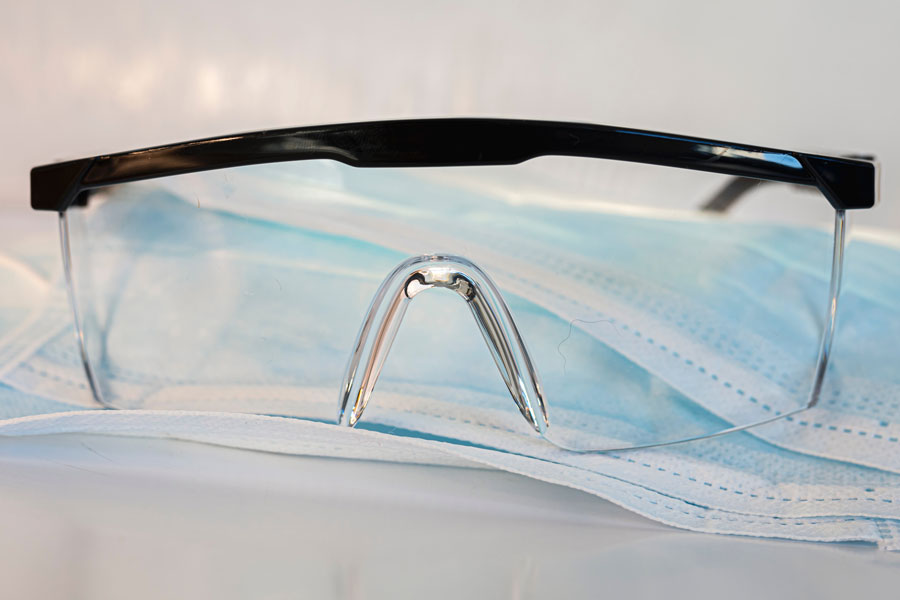What eye protection do I need? How to choose the right safety glasses

Choosing the right eye protection for different work processes is very important – your eyes are delicate and easily injured, so make sure you choose the right eye protection for your specific application.
Things to consider when choosing safety glasses
Safety glasses, safety goggles and polycarbonate face shields are all examples of eye protection. The level of protection you need differs depending on what tasks are being carried out on the job.
For that reason, you need to consider the work you’re doing, whether there are any mechanical risks such as metal shavings, airborne dust or liquid splash risks, whether the work is inside or outside, and whether some employees already wear prescription glasses.
Regular prescription glasses are not impact rated and require an ‘overspec’ or specialist prescription safety glasses.
Also, consider whether the environment is hot and or humid: anti-fog coatings can make work much safer and more comfortable for workers when you address the frustrating problem of glasses and goggles fogging up.
Low impact vs high impact eye protection
Using hand tools and low-powered tools are an example of low impact processes – the velocity of particles being emitted from the work is not likely to be very fast, and therefore the risk of injury is lower. Compare this to using a 9” grinder which presents quite a different scenario. The velocity of particles being thrown up from grinding can be very fast, resulting in far greater protection being required to deflect materials such as metal swarf from being lodged in the eye.
Many common tasks are covered by medium impact protection, such as using small power tools,
So far we have covered mechanical processes, but what about chemical risk?
Eye protection for liquids, chemicals and fumes
If the particles are very small, such as those measured in microns, then safety goggles might be a better option. Fumes and spatter from chemical transfer processes, dealing with gaseous substances and working with liquid chemicals, molten materials, solvents and paints are examples of times when safety goggles in either vented or non-vented versions would be a good option.
Polycarbonate face shields present the highest level of protection, and can be worn in conjunction with safety glasses for extra protection against high risk work processes. These are commonly used where both splash and high impact hazards exist.
Clear, tinted or amber?
It might seem obvious that clear lenses are good for indoor work and grey or tinted lenses for outdoor sun protection, but what about yellow or amber safety glasses?
Amber lenses are commonly used in lower light situations as they can assist with filtering part of the light spectrum, helping to reduce eye fatigue when working in low light areas.
Safety glasses and Australian Standards
Most well-known brands of industrial safety eyewear are compliant with stringent standards to ensure that they protect against impacts far greater than what you might encounter on the average building site.
Testing involves a small ball bearing fired at the lens – medium impact eye protection has to withstand the ball bearing travelling at very high velocity at close range. Make sure you look for the Standards mark on your glasses and goggles to ensure you are fully protected.
Need help finding the right eye protection?
Jaybro’s safety team are here to assist you in selecting the best eye protection.
For more than two decades, Jaybro has been expert in site consumables, and with the recent acquisition of Defender Safety we can now bring you renowned brands such as UVEX and MSA along with the brands that we have been supplying for years.
Most products are in stock and ready for delivery now – just give our friendly customer service team a call – we’re open from 6.30am!
 Sign In
Sign In 

